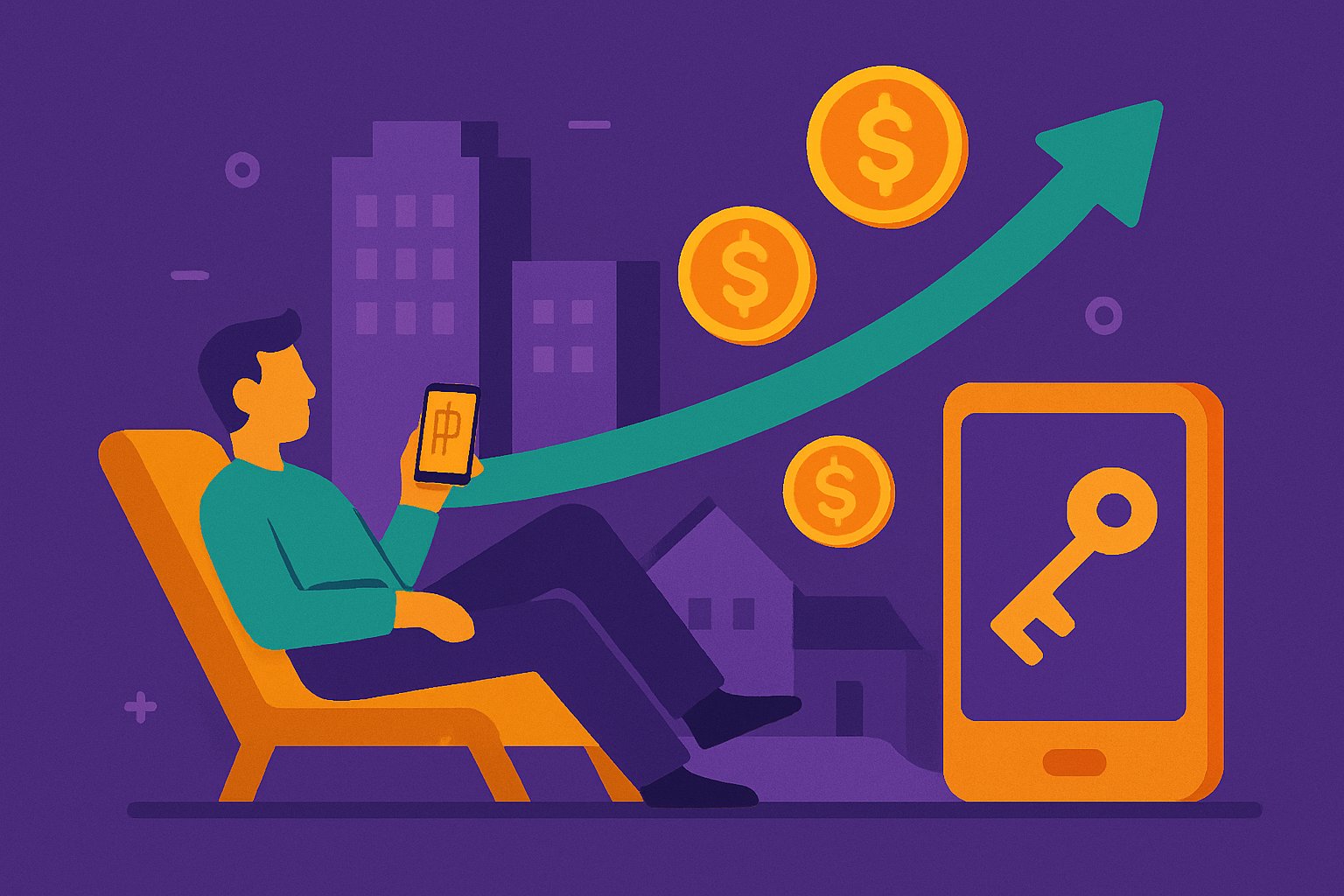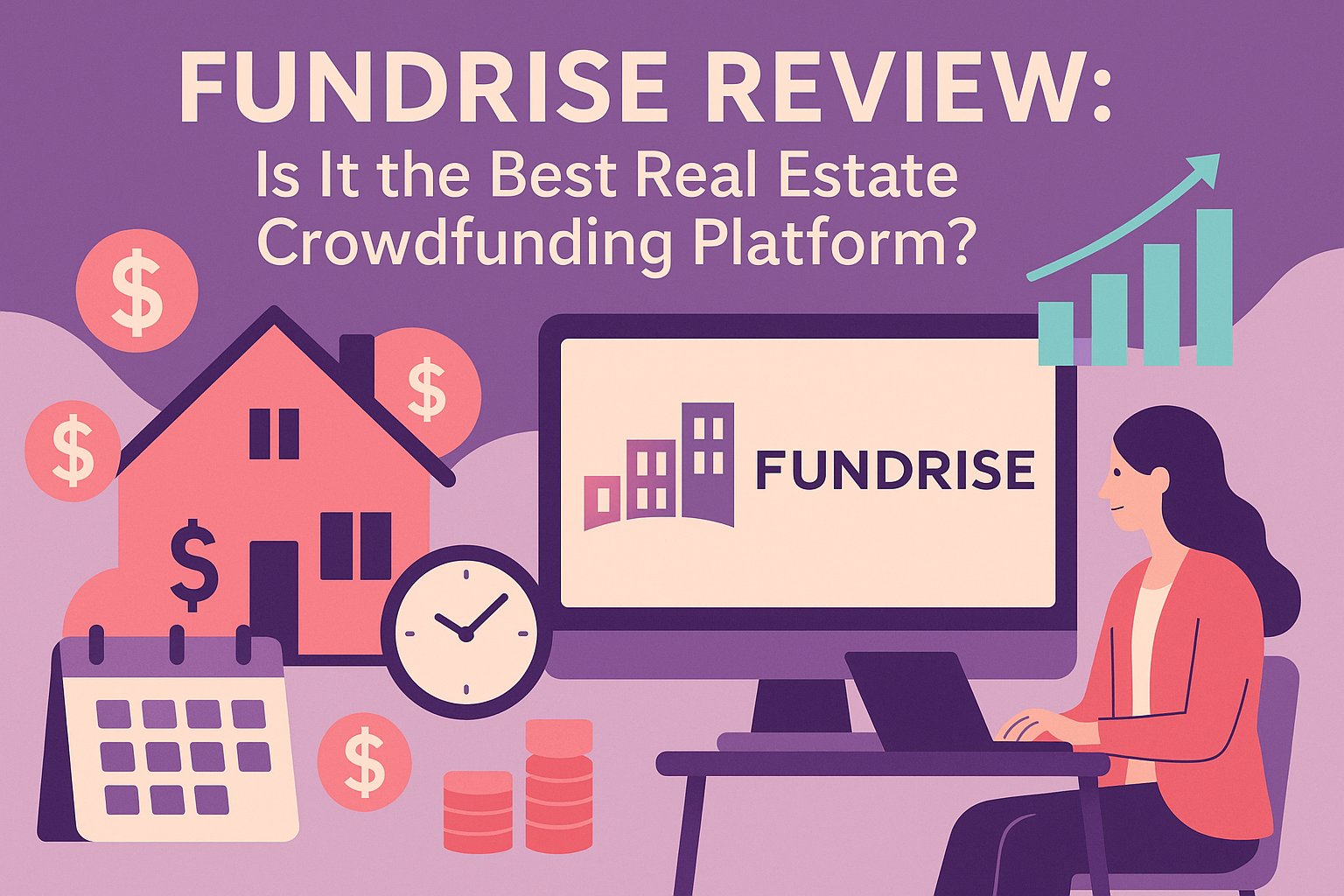Embarking on Your Fundrise Adventure
Stepping into the world of passive real estate investing can feel overwhelming at first. Traditional real estate often demands significant capital, hands-on management, and a steep learning curve. Enter Fundrise, a platform designed to democratize real estate ownership by allowing investors to participate in professionally vetted property projects with just a few clicks. Whether you’re a seasoned investor seeking diversification or a newcomer eager for long-term wealth building, understanding how to get started with Fundrise can illuminate a path toward achieving your financial goals without the headaches of being a landlord. In this guide, we’ll explore the steps, strategies, and insights that will empower you to embark on your Fundrise journey confidently and effectively.
Why Fundrise Deserves a Spot in Your Portfolio
Before diving into the mechanics of signing up and investing, it helps to appreciate what makes Fundrise stand out in the crowded real estate crowdfunding landscape. At its core, Fundrise is committed to lowering the barrier to entry for real estate investing by pooling funds from multiple accredited and non-accredited investors. This fractional ownership model enables you to access commercial and residential properties that would otherwise be out of reach. The platform carefully vets sponsors and projects, aiming to deliver a balance of income, appreciation potential, and long-term stability. By offering diversified eREITs and eFunds—private market vehicles that blend equity and debt opportunities—Fundrise opens doors to real estate sectors such as residential rental properties, commercial buildings, and mixed-use developments.
One of Fundrise’s hallmarks is transparency. Investors can review each project’s details, track performance metrics, and understand how the underlying assets contribute to portfolio returns. Additionally, the user-friendly dashboard simplifies ongoing monitoring: you’ll see quarterly updates, property valuations, and expected cash flow distributions. For those interested in passive real estate investing, this level of clarity fosters confidence. Rather than worrying about tenant issues, property maintenance, or navigating complex financing, you can focus on strategic allocation and long-term growth. As you consider introducing Fundrise into your investment mix, keep in mind that the platform’s approach is designed to complement traditional retirement accounts, brokerage portfolios, or even other real estate holdings without requiring hands-on property management.
Navigating the Fundrise Sign-Up Journey
Getting started with Fundrise is remarkably straightforward. First, visit Fundrise’s website and click on the Get Started button. You’ll be prompted to create an account by providing basic information such as your name, email address, and a secure password. Next, complete a brief questionnaire that helps Fundrise assess your investor profile. This questionnaire covers factors like your investing experience, time horizon, risk tolerance, and financial goals. While the form may feel a touch detailed, it ultimately helps the platform recommend suitable investment portfolios tailored to your objectives.
Once your profile is complete, Fundrise will suggest a starter portfolio—typically one of its diversified eREIT or eFund offerings. These portfolios are structured based on your risk preferences and anticipated investment horizon. You’ll have the opportunity to review Fundrise’s recommendations, adjust your initial investment amount, and confirm your choice. At this stage, you can link your bank account through a secure integration. Fundrise uses industry-standard encryption and bank-level security protocols to safeguard your data. After your account is funded, you’ll receive a confirmation email, and your investment journey will officially begin. Remember that the minimum initial investment varies depending on the portfolio: many Fundrise Starter Portfolios require just one hundred dollars, making it accessible for investors at various income levels.
Exploring Fundrise’s Investment Options
Once your account is activated, it’s time to explore the array of investment vehicles within Fundrise. The platform primarily offers two types: eREITs and eFunds. An eREIT (Electronic Real Estate Investment Trust) operates similarly to a traditional REIT but is exclusively available through Fundrise’s online platform. eREITs pool capital to purchase income-generating properties, distributing dividends to investors on a quarterly basis. Fundrise’s eREITs are typically categorized by property type—residential, commercial, or mixed-use—and by geographic focus. Diversifying across multiple eREITs can help you spread risk and capture growth in distinct real estate segments.
On the other hand, eFunds are structured as private real estate funds that focus on property development or renovation projects. These funds may target value-add strategies, such as acquiring underperforming multifamily buildings and repositioning them through renovation and improved management. While eFunds can offer higher potential returns, they may also come with a slightly longer hold period as properties undergo the development lifecycle. By understanding the nuances of each vehicle, investors can craft a portfolio that blends income-focused assets with growth-oriented opportunities. It’s also worth noting that Fundrise occasionally introduces specialty portfolios, such as those focused on housing affordability or sustainability, allowing impact-driven investors to align real estate allocations with personal values.
Crafting a Strategy for Passive Growth
After exploring Fundrise’s options, the next step is ensuring your passive real estate investment strategy aligns with your broader financial objectives. Consider your time horizon: if you’re saving for retirement a decade or more away, a growth-oriented eFund allocation might be attractive. Conversely, if you anticipate needing liquidity sooner—perhaps within five to seven years—the more income-focused eREIT components could provide steady quarterly distributions. Additionally, contemplate the level of risk you’re comfortable assuming. While real estate generally exhibits lower volatility than stocks, property-specific factors—like local market fluctuations, tenant turnover, or development delays—can influence returns. Balancing a mix of conservative, income-generating assets with a slice of higher-growth potential projects can smooth out performance and foster resilience across market cycles.
It’s also important to think about diversification. Even within the Fundrise ecosystem, spreading your capital across multiple portfolios can reduce concentration risk. Because each eREIT or eFund may emphasize different property types or geographic regions, diversifying can help mitigate the impact of localized downturns. Furthermore, you can treat Fundrise as a component of a larger portfolio. For instance, pairing your equity-heavy stock holdings with passive real estate investments can create a more balanced asset allocation—capturing potential real estate appreciation while cushioning against stock market swings. Remember that passive real estate investing is a marathon, not a sprint: consistent funding and periodic reviews will help you stay on track toward your long-term goals.
Monitoring Performance with Ease
Once your investments are live, Fundrise makes monitoring performance remarkably intuitive. Upon logging into the dashboard, you’ll encounter an overview of your account value, periodic distributions, and proprietary performance metrics such as the Net Asset Value (NAV) of each portfolio. Fundrise typically provides quarterly financial reports for each project, detailing revenue, occupancy rates, and any notable milestones—such as construction updates or lease renewals. By reviewing these reports, you can assess how each property aligns with projections and understand how dividends are generated.
Fundrise also offers an annual valuation report, which aggregates performance data and discusses portfolio-level trends. This transparency helps you gauge whether your investments are meeting expectations and whether adjustments to your allocation might be warranted. While monitoring, keep in mind that real estate investments generally exhibit less frequent price updates than stocks. Fundrise’s NAV updates aim to capture property-level valuation changes, but market conditions may evolve more rapidly than reported figures. Therefore, embrace a long-term perspective when interpreting performance. Resist the urge to react to short-term NAV fluctuations; instead, focus on fundamental indicators such as occupancy, rent growth potential, and sponsor execution. By blending disciplined monitoring with patience, you can make sound decisions without succumbing to market noise.
Understanding Fees and Returns
Before fully committing your capital, it’s essential to understand the fee structure that underpins Fundrise’s offerings. Fundrise charges an annual advisory fee—typically 0.15 percent of assets under management—which covers platform maintenance, reporting, and customer support. Additionally, each eREIT or eFund may carry an asset management fee, generally ranging between 0.85 to 1.00 percent. These fees compensate the sponsor for sourcing deals, performing due diligence, and managing properties. While fees can erode net returns, Fundrise’s fee model remains competitive compared to traditional real estate funds or private equity structures, which often impose management fees of 1.50 to 2.00 percent or higher.
Investors should also be aware of potential performance fees. Some eFunds have a promote structure, where sponsors receive a share of profits above a predetermined threshold. By reviewing fund documents carefully, you can identify how profits are split and when a promote becomes payable. Understanding these nuances empowers you to estimate net internal rates of return (IRR) more accurately. Historically, Fundrise portfolios have targeted annualized returns between 8 to 12 percent, though results can vary based on market cycles and individual project performance. When projecting returns, consider both cash distributions and potential appreciation realized at property sale. Accounting for fees, you can set realistic expectations and measure whether your investment is on pace to meet your objectives.
Staying Informed: Resources and Community
Investing in real estate—passively or otherwise—requires ongoing education. Fundrise recognizes this need by offering a robust library of educational content. From blog articles discussing market trends to recorded webinars featuring guest experts, Fundrise’s resources cater to investors at all levels. Newcomers can explore fundamentals like capitalization rates, property underwriting, and tax implications (for example, understanding depreciation benefits). More seasoned investors may appreciate deep dives into niche topics such as the impact of interest rate shifts on property valuations or emerging opportunities in suburban housing markets. As the real estate landscape evolves, staying informed through reputable sources is critical to making educated choices.
Beyond educational materials, Fundrise fosters community engagement through its Investor Forums. Within these forums, you can interact with fellow investors, ask questions about fund performance, share insights on local market conditions, and learn from collective experiences. While the platform does not provide direct financial advice, the community discussion often serves as a valuable sounding board. Exchange ideas on topics such as portfolio rebalancing, tax planning strategies, or the pros and cons of various real estate sectors. By immersing yourself in this collaborative environment, you can tap into the wisdom of like-minded individuals and refine your own investment approach over time.
Imagining Your Real Estate Wealth-Building Future
As your passive real estate venture with Fundrise unfolds, it’s natural to wonder how these investments fit into your broader financial picture. Over time, consistent quarterly distributions and compounded property appreciation can contribute meaningfully to your net worth. Whether you reinvest dividends to accelerate growth or allocate distributions toward other goals—such as debt reduction or retirement contributions—having a reliable passive income stream can provide flexibility and peace of mind.
Moreover, Fundrise’s tax-advantaged structure presents additional opportunities to maximize after-tax returns. Many distributions are classified as return of capital, which may reduce taxable income in the short term, while depreciation deductions can offset tax liabilities. Although you should consult a qualified tax advisor for personalized guidance, leveraging these benefits can enhance the efficiency of your real estate investments. As you accumulate capital through Fundrise, consider periodically reviewing your asset allocation: perhaps you’ll decide to introduce other alternative investments, rebalance into public equities, or shore up cash reserves for future opportunities.
Ultimately, successful passive real estate investing is as much about patience and perseverance as it is about strategy. Crowded markets, shifting economic conditions, and occasional headwinds are inevitable, but a well-constructed portfolio that aligns with your risk tolerance and time horizon can weather these storms. By partnering with Fundrise—an accessible platform that combines transparent deal sourcing, diligent underwriting, and ongoing education—you can cultivate a path toward sustained growth and financial independence. As you look ahead, imagine the day when your passive real estate income complements your salary or retirement savings, unlocking new possibilities such as early retirement, travel, or charitable giving. With Fundrise as your ally, that vision can become a reality—one property at a time.




